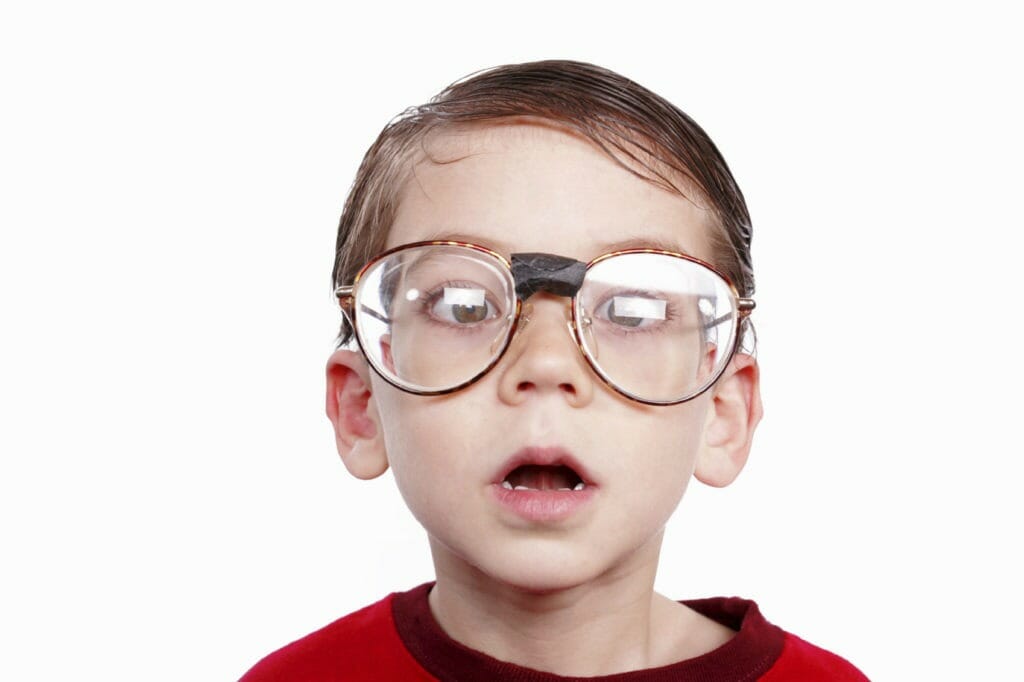Does My Child Have Vision Problems?

Every parent knows what it’s like to worry about their children’s health. We all want what is best for our kids. However, one area where we may not be aware our children might be struggling is with their eyesight. It’s tough sometimes for a child to even know that his vision is not perfect.
Maybe you’ve heard a story like this — “When my father was growing up, he didn’t even know street signs had street names on them. It took a few years before he even knew he needed glasses because he never mentioned it…” It’s a relatively simple and pain-free process to have your child’s eyes checked, and it is worth it to save years of trouble.
Common Vision Symptoms in Children
There are two typical signs that your child might have a vision problem. The first is if they complain or mention that they cannot see the blackboard at school. This is the easiest way to tell if your child might have problems with long distance vision. The other indicator is if they have a hard time reading the text books. This indicates a close up vision problem.
If your child mentions either of those problems, then having them diagnosed by an eye doctor will benefit them greatly. Once diagnosed, the pediatric eye doctor can determine exactly what condition your child’s eyes might have. Some common symptoms to look in toddlers for include: bumping into walls, squinting frequently, closing one eye to see things, and holding objects close to the face.
My Toddler Has Lazy Eye
Some common vision problems in children can simply be the result of growing pains. However if your child has a hard time focusing both eyes or has a “lazy eye” then it’s possible your child has a condition called strabismus. Strabismus causes an inability to focus both eyes in the same direction at one time.
If your child gets diagnosed with strabismus, it’s important to begin treatment as early as possible to prevent the condition from getting worse, and developing into amblyopia. Amblyopia is an advanced stage of strabismus that can affect people for years. However, if strabismus can be treated in children under the age of 6, treatment can usually solve the problem and ensure healthy vision development.
Does My Child Need Glasses?
If your child could be experiencing any of these symptoms, it is important to have them checked out by an eye doctor. A toddler with a “lazy eye” can develop healthy eyesight with early treatment. If your child is near-sighted or far-sighted, the earlier they can receive treatment, the easier time they will have.
It’s also important, if your child does need glasses, that they only wear the glasses at the appropriate times. If your child needs glasses to see the blackboard, they should be reminded to take them off when reading. Wearing glasses when they are not needed slowly weakens your child’s eyesight over time, thus requiring a stronger correction at a later time. Whatever the specific recommendations from your eye doctor, it’s important that parents support that recommendation to ensure the healthiest outcome possible for your child.
[Photo Via: img.pcdn.vresp.com]

